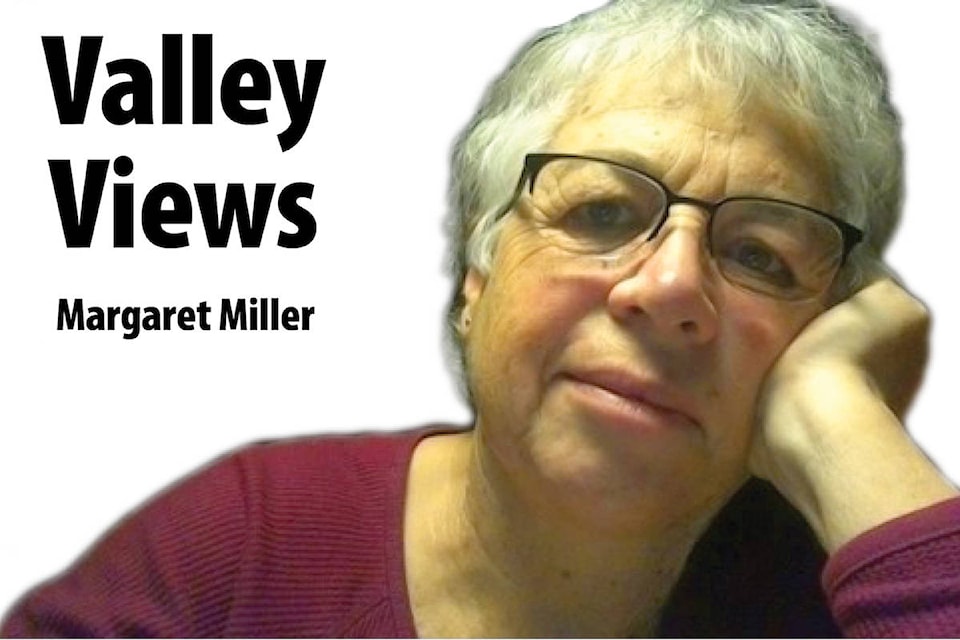“Valley Views” column by Margaret Miller
Unlike many others, I don’t own a smartphone. I don’t have in-my-palm access to the internet, social media sites and an endless array of apps. I can’t access email away from home or find out at the drop of a hat what the temperature might be in Inuvik. And that’s perfectly fine.
I’m not a complete Luddite. I appreciate technology and try to keep a finger on the pulse of popular culture. My desktop computer performs loads of tasks. I subscribe to Netflix and listen to Spotify. And some now popular text abbreviations - like TTYL, LOL, BTW and YOLO - make perfect sense to me. But I’m not quite ready to take the smartphone plunge.
I own a simple cell phone, a small flip-top model like something from an old Star Trek episode. It sends and receives calls and texts and takes a decent photo. It even boasts a calendar, notepad and calculator! But it requires multiple taps to compose even short texts. For example, the two word “at home” text requires 11 taps on the keyboard.
Some family and friends find my 21st century equivalent of Morse Code amusing or unnecessary. But the tapping doesn’t usually bother me. My old phone has kept me linked to those I care about for years. She’s a workhorse and in the words of the My Fair Lady show tune, I’ve grown accustomed to her face.
READ MORE: Valley Views: RIGHT OR RESPONSIBILITY?
Times certainly change. When I moved to West Creston in 1988, my home phone used a party line, something I’d seen in old movies and the 1960s sitcom Green Acres. My husband and I shared a line with a family of four. If we wanted to call out, we lifted the handset and heard either a dial tone or the chatter of teenagers.
Neighbourly etiquette required we hang up, wait about 10 minutes and try again. Most of the time, it worked. I’d lived in a city for years, so life on a quiet street where neighbours shared friendly waves, garden produce and phone lines seemed pleasantly quaint.
Soon, technology changed things. Private lines became the norm and cordless phones ended the mad dash indoors when the phone rang. In the 90s we got our first computer, a hand-me-down from friends. The monitor weighed a ton and it relied on dial-up service, but we’d entered the new age. The screech and buzz of the dial-up connection became a familiar sound and emails replaced handwritten letters to distant family.
The sands continued to shift. Electronic stores in Creston displayed new wares and local computer services expanded. Router, Skype and Netflix became household words. New residents arrived from large centres, able to work online. These changes were exciting. Lifestyle options. Efficient communication. Access to information.
And, as in many places on the planet, screens and more screens made their appearance in our valley. Big ones and little ones. In our homes, schools and businesses. In public buildings, pubs and eateries. In the palms of smartphone owners, young and old.
Of course, smartphones are useful and convenient. They keep us informed and connected. They’re great in an emergency. But they have the power to lure some owners down the rabbit hole of over-use. A wait at the checkout? Open Facebook. A few minutes before the kids get home? Scroll through Youtube.
In his book Too Much of a Good Thing, writer James Roberts introduced the term phubbing (blending phone and snubbing) for phone use that infringes on others. Technologies should assist interaction, not create social distance or distract users from their immediate surroundings. This isn’t always the case.
Perhaps it’s fear of falling in love with a smartphone that prevents me from adopting one. More likely, it’s my need for a little empty space each day, time away from cluttered cyberspace.
Of course, my needs will change. Travel without a smartphone is increasingly difficult and my old flip-top is wearing out. Until she breathes her last, I’ll stay by her side. It’s what we do for old friends.
READ MORE: Valley Views: SIX MONTHS OF LESSONS
